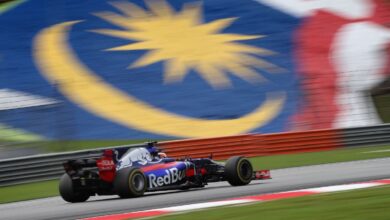Formula 1’s Electric Blanket Ban: Debate Intensifies as Implementation Gets Postponed
Teams and Pirelli Clash Over Electric Blanket Ban's Future, Impacting Strategy and Race Dynamics
Formula 1 recently stirred up a wave of discussions by taking a step back from its previously anticipated electric blanket ban, originally scheduled to be included in the 2024 regulations. This move, despite attracting considerable attention, has been met with a collective decision by the teams to delay the implementation of the ban. This decision has once again ignited the ongoing debate: should the ban be upheld or reevaluated?
Listening to the Stakeholders: Drivers and Teams
Amidst this intricate decision-making process, the voices of Formula 1’s stakeholders have been anything but silent. Drivers, quite reasonably, expressed concerns about the safety risks associated with starting a session on cold tires. However, tests have indicated that it takes only a few laps for the tires to warm up and gain substantial traction.
Teams have remained steadfast in their initial stance that tire blankets should continue to be used. Meanwhile, both the FIA and Formula 1 have hesitated to outright dismiss the possibility of Bridgestone becoming the official tire supplier. If the ban were to be enforced in 2024, the focus would inevitably shift to Pirelli, who are eager to retain their position in the sport.
Pirelli’s Comprehensive Tire Analysis and Research
After an exhaustive 17,134 kilometers of on-track testing and countless more in simulation, Pirelli has unveiled a comprehensive analysis of their unheated tires. In a comparison with the current C3 tire compound utilized in the 2023 F1 season, albeit without heating, Pirelli demonstrated a significant improvement in their findings, albeit with potential consequences.
In conditions of colder tracks, their hard tires exhibited an initial loss of up to six-tenths, with the first lap showing a two-second deficit. Only after two laps did the tires begin to perform optimally. On hotter tracks, a single lap sufficed for the rubber to reach peak performance.
Comparing the 2023 tires with the new unheated counterparts at optimum rubber and air temperatures, the loss amounted to a mere 3%. These fresh tires also displayed slower wear rates in cold temperatures, with only marginal acceleration in wear under hotter conditions. However, this revelation might not sit well with fans, many of whom advocate for more pit stops during race weekends.
Both tire variants exhibited susceptibility to overheating on hot tracks after prolonged usage. Pirelli emphasizes that the development of this new range is ongoing.
Shifts in Strategy
Pirelli acknowledges that races could potentially extend by around four seconds with these new unheated tires, attributed to the slower initial laps. Nevertheless, the Italian company contends that this alteration could lead to reduced opportunities for undercutting. This would necessitate drivers to focus on on-track overtaking maneuvers rather than relying heavily on pit strategies.
As the current season has shown, it remains to be seen whether this prediction holds true, as it could potentially result in races with reduced excitement due to the diminished role of pit strategies, while still yielding a comparable number of overtakes. Pirelli, on the other hand, asserts that teams will adopt diverse strategies based on tire compounds, a viewpoint I personally find challenging to fully embrace.
Furthermore, heightened attention will be directed towards the driving style during a tire’s initial lap, as it significantly influences the tire’s behavior throughout its usage, adding an additional layer of strategy to this critical moment.
The continuation of this testing hinges on Pirelli securing the role of the tire provider, though currently, confidence in this prospect remains shaky, both for me and, likely, for the teams and drivers.



